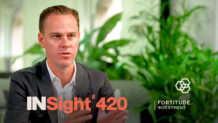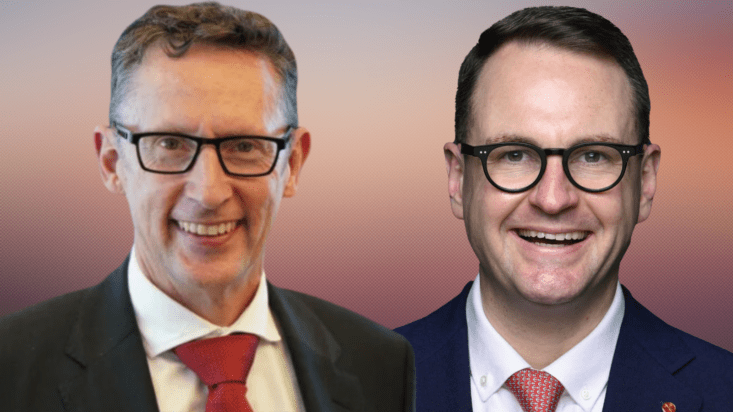Advisers slugged with $2,878 levy as industry gets behind funding model reform
The advice industry is pushing for the adoption of a proposal by the Senate Economics Legislative Committee to change the corporate regulator’s funding model, just as the regulator released its estimate of the annual bill for its services.
According to ASIC’s annual Cost Recovery Implementation Statement, licensees of advisers providing personal advice to retail clients will be charged $48.39 million for the 2023/24 financial year, or a minimum of $1,500 plus $2,878 per adviser.
The estimate – a slight increase on last year’s $2,818 per adviser – comes after two recent reports from within government channels both recommended an overhaul of the industry funding model.
Last year Treasury acknowledged the flawed natured of the ‘user pays’ model, whereby all industry participants pay an aggregated regulatory cost, in its own review, concluding that the approach “does not align” with the principle of charging the people who actually caused ASIC’s regulatory costs.
This ‘moral hazard’ was then picked up in the Senate Economics Committee’s recent review into ASIC, which quoted numerous sources asserting that the model placed a “disproportionate regulatory burden on certain industry participants”.
The Senate Committee, chaired by liberal senator Andrew Bragg (pictured, right), made a review of the industry funding model one of its 11 key recommendations in its final report, arguing for a greater level of funding to come from the proceeds of regulatory fines and greater accountability from regulators in reducing the costs to industry.
But it is the nature of the industry funding model itself that grates advisers as much as the cost itself. Non-institutional financial advisers were already disgruntled after having their reputation marred when widespread misconduct, largely committed by bank-owned advice practices, was uncovered during the Hayne Royal Commission. After the banks subsequently left advice en masse, those advisers are being further aggravated by being forced to pay the regulatory costs largely incurred by the banks.
Exacerbating this sense of injustice has been the Dixons Advisory catastrophe, which saw hundreds of financial advice clients lose money to malfeasance. The case will not only see advisers pay an outsized amount in the forthcoming Compensation Scheme of Last Resort levy (estimated at $100 plus $1,186 per adviser), but is also likely to make the ASIC levy even higher over the next few years.
All this comes against a backdrop of steeply falling advice numbers, with increased costs cited as a contributing factor.
Reports ‘gathering dust’
While the advice industry has always railed against an industry funding model that punishes good advisers for the sins of the bad, it now has two deeply researched reports from inside the government to lean on as evidence that reform is necessary.
After ASIC released its estimate this week, the Financial Advice Association of Australia said the vast majority of advisers “are doing the right thing, yet are paying for supervision and enforcement against those who are not – including those who are unlicensed”.
The FAAA called on the government to implement the 2023 Treasury review’s call for a review into the funding model, noting that the government appeared to be ignoring its own advisory body. “That report was delivered over a year ago now, and seems to be gathering dust,” FAAA chief executive Sarah Abood noted.
The FAAA also noted the Senate Committee’s report, which highlighted that ASIC’s “highly profitable” fee gathering operations brought in a $1.4 billion surplus for the 2022/23 financial year. “Government has plenty of room to make the levy fairer and more sustainable,” Abood added.
The Self-managed Superannuation Fund Association this week highlighted the Senate Committee’s assertion that the funding model “clearly is not fit for purpose”, adding that “the underlying principle of the IFM, where well-behaved firms foot the bill to regulate poorly behaved firms, is fundamentally flawed and unsustainable.”
The egg before the chicken
Thus far, efforts to hold the government to its own departmental recommendations appear to have been in vain.
The government has previously acknowledged both that increased costs are a reason adviser numbers have cratered, and that ASIC’s advisory levy is a part of those costs. When assessing the issue, however, Financial services minister Stephen Jones put the egg before the chicken by putting the blame on advisers leaving the industry rather than spiralling costs forcing them to leave.
“If there are fewer bodies to pass regulatory costs on to, they’re going up,” Jones (pictured, left) told advisers at an industry event in May. “So, if you’re looking at why your regulatory fees have doubled over the last four or five years, it’s because the number of advisers who are paying it has halved.”
Rather than fix a model that both Treasury and the Senate Committee advised was broken, Jones believes getting more advisers into the industry is the best way to alleviate the problem.
“The only sustainable way is to get more advisers and spread the costs right across the industry more fairly,” he said.











